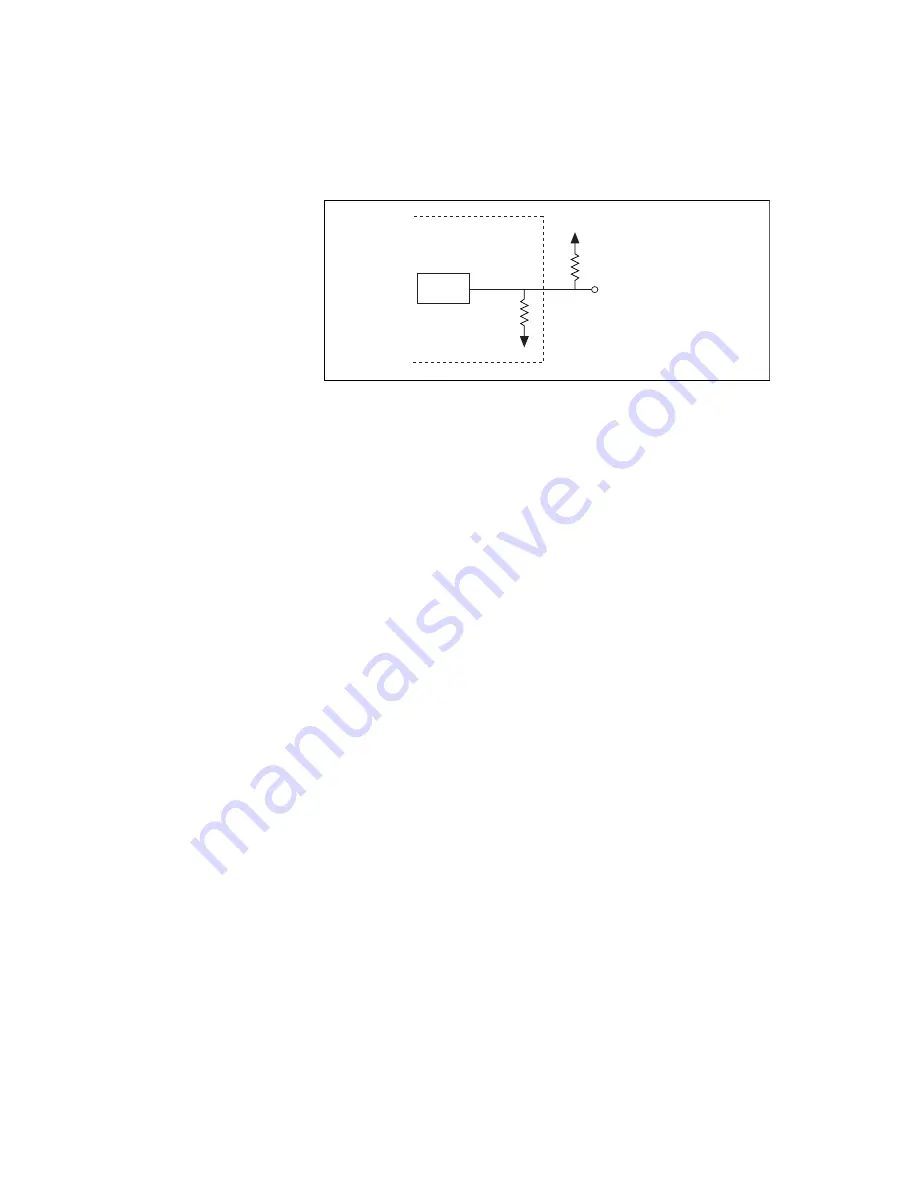
Chapter 3
Signal Connections
©
National Instruments Corporation
3-11
Figure 3-7. DIO Channel Configured for Low DIO State with External Load
Example:
The switch is set in the low DIO state, which means all DIO lines are pulled
low. If you want to pull one channel high, follow these steps:
1.
Install a load (R
L
). Remember that the smaller the resistance, the
greater the current consumption and the lower the voltage (V).
2.
Using the following formula, calculate the largest possible load to
maintain a logic high level of 2.8 V and supply the maximum sink
current (I).
V = I * R
L
⇒
R
L
= V / I, where:
V = 2.2 V is the voltage across R
L
I = 28
µ
A + 10
µ
A is the 2.8 V across the 100 k
Ω
pull-up
resistor and 10
µ
A from 82C55A leakage current
Therefore:
R
L
= 5.7 k
Ω
is the 2.2 V / 38
µ
A
This resistor value, 5.7 k
Ω
, provides a minimum of 2.8 V on the DIO line
at power up. You can substitute smaller resistor values but they draw more
current, leaving less sink current for other circuitry connected to this line.
The 5.7 k
Ω
resistor reduces the amount of a logic low sink current by
0.8 mA with a 0.4 V output.
Floating DIO State
The DIO lines are not pulled high or low by your DAQPad device in this
configuration. Use an external 100 k
Ω
resistor to pull the line to the state
you want.
DAQPad-6507/6508
Digital I/O Line
+5 V
GND
100 k
Ω
R
L
82C55A
















































